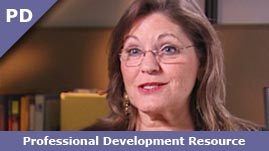Teachers' Domain - Digital Media for the Classroom and Professional Development
User: Preview

Source: Making Learning Real: "Why It Works"
This media asset is from Making Learning Real: "Why It Works."
In this video from Making Learning Real, practitioners and developers of Problem-Based Case Learning (PBCL) explain how the PBCL approach helps students take a hands-on approach to learning and apply their studies to real-world professional scenarios. Because PBCL problems are open-ended, teachers and students must adjust to unexpected situations as students create multiple, equally valid solutions. The PBCL approach includes feedback, reviews, and revisions. This approach brings a meaningful, professional experience into the classroom, such that one PBCL developer says it enables PBCL students to outperform non-PBCL students on job-related problems.
With PBCL, students apply their knowledge to actual problems that are framed by business partners and instructors. The business partner benefits from the students’ solutions, while students get to use what they have learned in a professional context. These business problems are real, open-ended challenges. PBCL methodology manages this open-endedness through a series of stages—including feedback, documentation, and reflection—that are built into the problem-solving process.
Because there is no one right approach to a solution, making mistakes is an essential part of the PBCL process: students gain an awareness of what may have gone wrong, and have the opportunity to revise their approaches. They also get the chance to examine multiple, equally valid answers to the same problem. With PBCL, students directly apply their knowledge to a real problem in a real profession. When they enter the work world, this real-world experience can give them an advantage over those taught only through academic approaches.
While PBCL originated in two-year colleges’ technical education programs, secondary schools have applied the methodology successfully to a wide range of STEM content.
 Loading Standards
Loading Standards